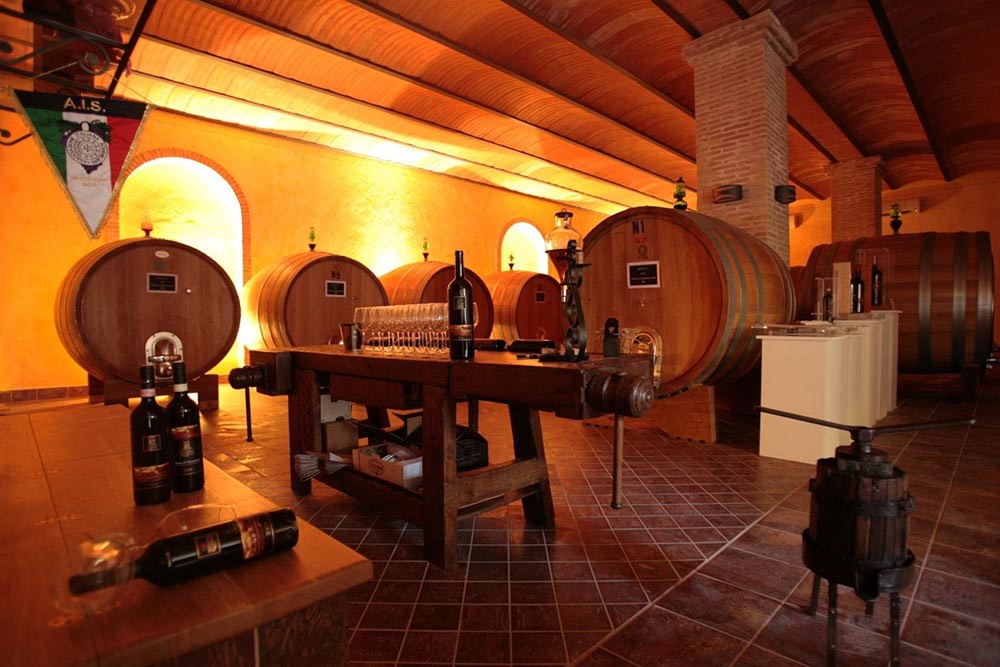Brunello di Montalcino is one of the most famous Italian wines in the world, with a history rooted in the 19th century. It was Clemente Santi, a local pharmacist and agronomist, who experimented with vinifying Sangiovese Grosso, a native grape variety from the area, aiming to create a wine of long conservation and great structure. The success of this intuition led to the creation of a wine destined to become a symbol of Tuscan excellence.
The origins of Brunello di Montalcino
The first bottle labeled as
Brunello di Montalcino was produced in 1865 and officially presented in 1869 at the Montepulciano Agricultural Fair by Tito Costanti. For the first time at this event, a wine was showcased that had aged for four years instead of being produced and consumed in the same year! This method was highly unusual at the time, as most wines were made and drunk immediately. Another significant innovation introduced by Clemente Santi was using only pure Sangiovese without blending it with other grape varieties. These distinctive characteristics made Brunello unique, a status it retains today as one of the world's most acclaimed wines.

When does a wine become Brunello di Montalcino?
As mentioned, to obtain this designation, the wine must be produced exclusively in the Montalcino area and meet strict vinification and aging criteria. The regulations require a minimum aging of over four years, with at least two years in oak barrels and a minimum of four months in the bottle. This lengthy process gives Brunello its capacity to age gracefully, its characteristic deep color, complex aroma, and elegant, persistent taste.
What does DOCG mean?
DOCG stands for "Denominazione di Origine Controllata e Garantita" (Controlled and Guaranteed Designation of Origin), the highest quality certification for an Italian wine. This title is awarded only to wines that adhere to strict production standards and pass rigorous quality controls. Brunello di Montalcino was the first Italian wine to achieve this prestigious certification in 1980, highlighting its quality and significance in the national winemaking tradition.
The different types of Brunello di Montalcino
Brunello di Montalcino is available in two main variants: Brunello and Brunello Riserva. The former follows the basic regulations with a minimum aging of four years, while the Riserva requires an additional year of barrel aging and six months in the bottle before being released. Both wines offer a unique sensory experience, but the Riserva stands out for its greater complexity and longevity, making it ideal for special occasions or long-term cellaring.

A symbol of Tuscany in the world
Today, Brunello di Montalcino represents one of the most renowned excellences of Italian enology. Internationally appreciated, this wine tells the story and tradition of a unique territory, where the passion and dedication of the producers translate into a product of the highest quality. Each bottle of Brunello is a journey into Tuscan culture, an experience that captivates the palate and the heart of wine lovers.
A sensory journey: discovering the places where Brunello di Montalcino was born
If you're interested in delving into the history of Brunello, consider visiting the wineries of Montalcino, where you can taste the finest wines of the area and explore selected producers recognized for their historical value and innovative capabilities. Among the historic wineries, the
Fattoria dei Barbi and
Conti Costanti stand out. Both epitomize the tradition and quality of Montalcino wines. Rooted in history, Fattoria dei Barbi and Conti Costanti ensure an experience rich in heritage while looking toward the future. For a greener option, consider the biodynamic
Piombaia or the organic
Villa i Cipressi. At these wineries, you can learn about organic and biodynamic methods and sample products ranging from wine to olive oil, honey, and grappa. Other must-visit wineries include the family-owned
Poggio Rubino, the innovative yet traditional
Tassi, and
Casisano, where you can enjoy excellent wine and breathtaking views from a natural terrace overlooking its vineyards.